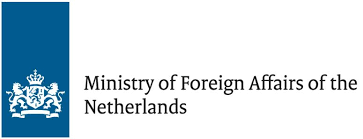Community / Land projects / VHC Urban Resilience Mandaue Cebu Philippines
VHC Urban Resilience Mandaue Cebu Philippines

€0
01/20 - 09/20
Completed
This project is part of
Implementing Organisations
Donors
Data Providers
General
Informal settlers, primarily fisherfolk, in the lowest lying zones of Jagobaio Village, Mandaue City remain exposed to coastal flooding and poverty. Despite urban resilience gains in Jagobiao village in 2018 and early 2019, informal settlers living in low-lying zones of the village, live in rudimentary conditions with lack of water, sewerage and poor quality building materials that exacerbating their risk conditions. A total of 300 household in Sitio Santo Rosario, San Antonio, Santo Nino and San Jose remain prone to extensive coastal flooding and storm surge. The households experience regular coastal flooding of up to one meter during heavy rains. Solid waste management challenges and pollution compound the flooding, clogging up the already poor drainage and increase health risks. The majority of these households are fisherfolk or daily laborers, and with limited livelihoods options, the majority of families live below the poverty threshold of 5,000 peso per month. The Cordaid and PARJ actions have been unable to directly impact this most vulnerable group to address resilience actions as a result of tenure status; drainage improvements, solid waste management and raised septic tanks in other parts of the village have not contributed to improvement for this group. The City Government and PARJ recognizes the importance of the restoration and management of the mangrove zone within which these families live within direct proximity. As a part of the larger city wide planning involving PARJ and the Jagobiao fisherfolk association plans are underway for the establishment and management of a mangrove eco-park, all stakeholders recognize the importance of engaging families living in these areas as a basis of the strategy. The mangroves swathes in Jagobiao are one of the last remaining mangrove zones in Mandaue City. The need to conserve and preserve them is highly important considering the threats of converting these mangroves to fishponds and salt beds, reclaiming them for urban land developments, and pollution and siltation from upland communities.
Objectives
A model of Mangrove Protection and urban resilience empowers the most marginalized urban poor and local actors to work together in Jagobiao, Mandaue City - Local actors combine capacities to agree a common strategy and plan for village wide action on Mangrove Protection and environmental management and poverty reduction to urban poor groups such as fisherfolks association (intervention funded by Cordaid – PfR efforts in 2019) - Community managed protection of 31 hectares mangrove result in improved environmental conditions - 300 of the most vulnerable families in Jagobiao have a 15% increase in monthly income - Community education programs in Jagobiao village enable at least 1500 villagers to engage in Mangrove protection and waste management
Target Groups
1,500 people in Barangay Jagobiao Mandaue City with highest vulnerability to hazards




